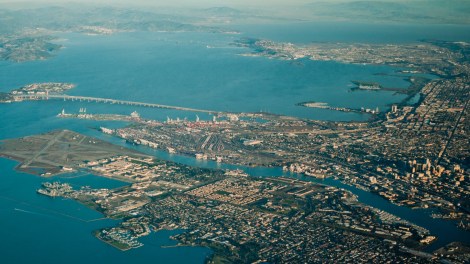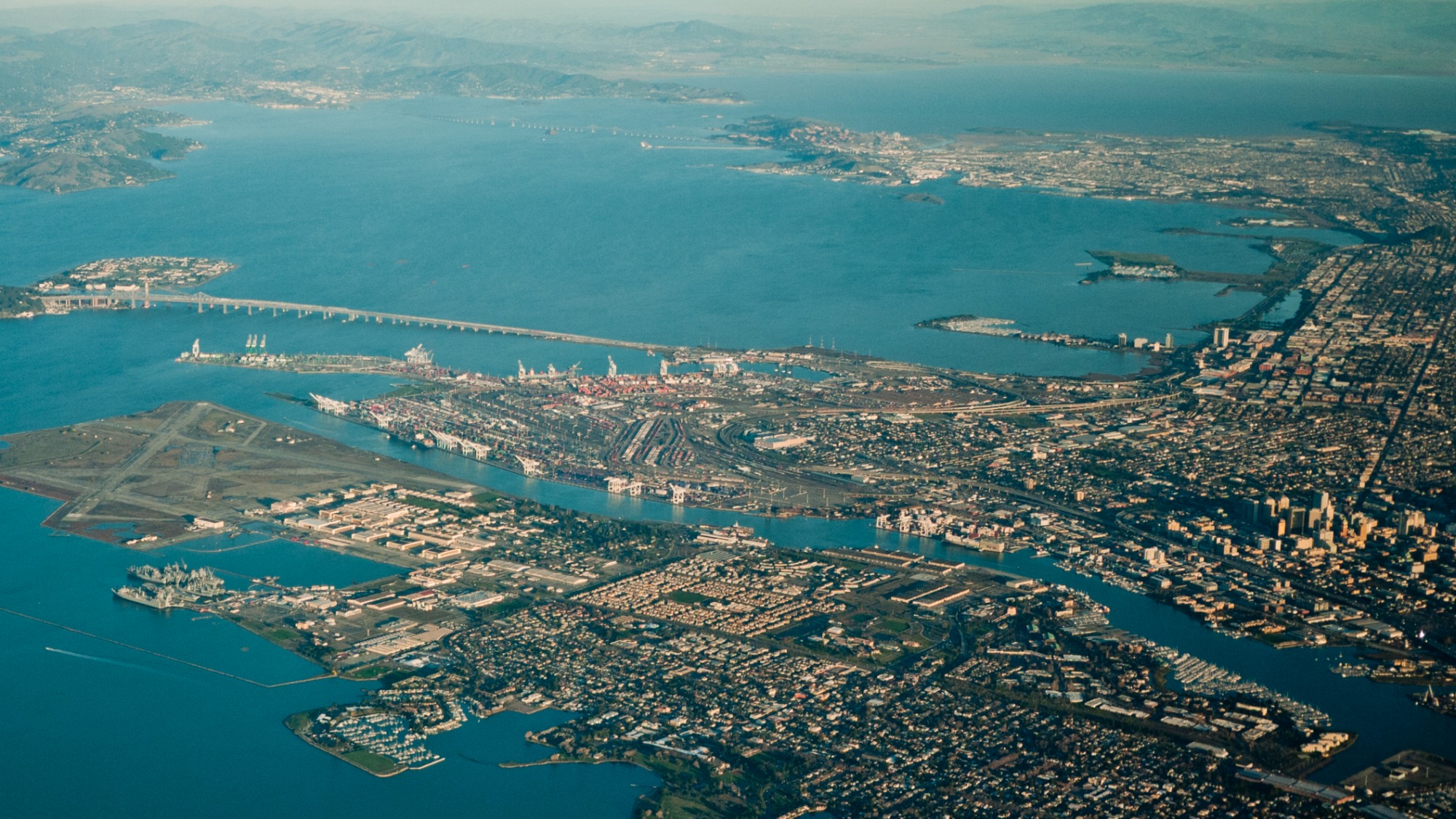
Stefan KlocekOakland and surrounds.
Rising seas and ferocious storms linked to global warming won’t just bring water to our doorsteps. In some cities, it will deliver a witches’ brew of sewage from low-lying drains and toxic waste from Superfund sites and industrial areas.
That’s because when seas rise, they don’t just top over shorelines. They can burble up through waterfront infrastructure like sewage systems. New America Media reports from Oakland, a port city built along San Francisco Bay — an estuary that’s vulnerable to the rises in the Pacific Ocean on the other side of the Golden Gate Bridge:
Because the flatlands are the lowest part of the city, they receive the overflow in a storm drainage system that relies on gravity and a sewer system that planners expect will be overwhelmed by sustained high water levels or by a storm surge of three or four feet above high tide. Water, and whatever industrial runoff or sewage is mixed with it, would backflow out of storm sewers onto streets, yards and basements.
“Some of the first flooding likely to occur will be in the low lying areas in Oakland, where the poor people happen to live,” said Lindy Lowe, lead senior planner of the Adapting to Rising Tides project of the San Francisco Bay Conservation and Development Commission. …
“Nobody from the hills to the flatlands will be able to flush their toilets” if a storm surge or rising tides were to top four feet, said Jeremy Lowe, sea level rise program manager at ESA and author of tidal wetland design guidelines for San Francisco Bay and an ecosystem-based climate change adaptation plan. …
“Most of the effects on communities will be the flooding of infrastructure,” said BCDC’s Wendy Goodfriend, a senior planner on the Adapting to Rising Tides project, with no where for the water to drain. “Drainage is a problem in East Oakland and West Oakland. These neighborhoods rely on sump pumps,” she said, to deal with saturated yards and homes during rainy seasons.
Short of armoring with New Orleans-style levees, the best adaptation solutions for cities like Oakland could be retrofitting and replacing infrastructure, relocating businesses, and abandoning neighborhoods. That’s a shitty pill to swallow.




